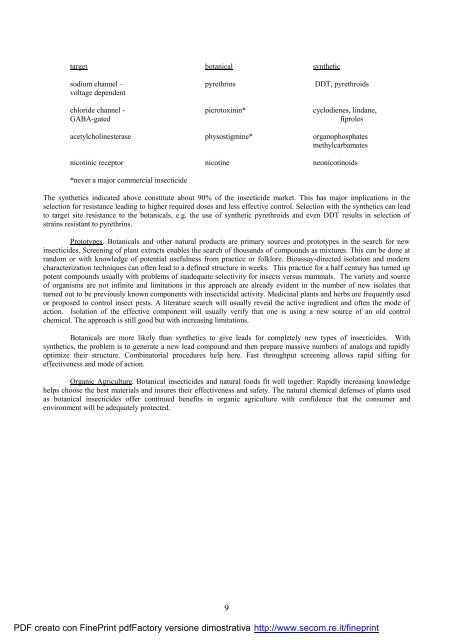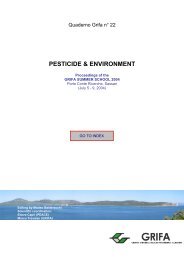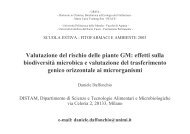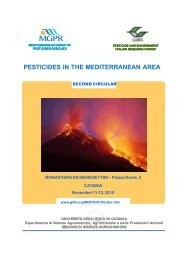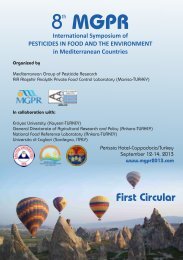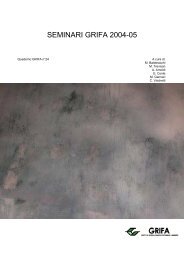International Congress BIOLOGICAL PRODUCTS - Gruppo di ...
International Congress BIOLOGICAL PRODUCTS - Gruppo di ...
International Congress BIOLOGICAL PRODUCTS - Gruppo di ...
You also want an ePaper? Increase the reach of your titles
YUMPU automatically turns print PDFs into web optimized ePapers that Google loves.
target botanical synthetic<br />
so<strong>di</strong>um channel – pyrethrins DDT, pyrethroids<br />
voltage dependent<br />
chloride channel - picrotoxinin* cyclo<strong>di</strong>enes, lindane,<br />
GABA-gated fiproles<br />
acetylcholinesterase physostigmine* organophosphates<br />
methylcarbamates<br />
nicotinic receptor nicotine neonicotinoids<br />
*never a major commercial insecticide<br />
The synthetics in<strong>di</strong>cated above constitute about 90% of the insecticide market. This has major implications in the<br />
selection for resistance lea<strong>di</strong>ng to higher required doses and less effective control. Selection with the synthetics can lead<br />
to target site resistance to the botanicals, e.g. the use of synthetic pyrethroids and even DDT results in selection of<br />
strains resistant to pyrethrins.<br />
Prototypes. Botanicals and other natural products are primary sources and prototypes in the search for new<br />
insecticides. Screening of plant extracts enables the search of thousands of compounds as mixtures. This can be done at<br />
random or with knowledge of potential usefulness from practice or folklore. Bioassay-<strong>di</strong>rected isolation and modern<br />
characterization techniques can often lead to a defined structure in weeks. This practice for a half century has turned up<br />
potent compounds usually with problems of inadequate selectivity for insects versus mammals. The variety and source<br />
of organisms are not infinite and limitations in this approach are already evident in the number of new isolates that<br />
turned out to be previously known components with insecticidal activity. Me<strong>di</strong>cinal plants and herbs are frequently used<br />
or proposed to control insect pests. A literature search will usually reveal the active ingre<strong>di</strong>ent and often the mode of<br />
action. Isolation of the effective component will usually verify that one is using a new source of an old control<br />
chemical. The approach is still good but with increasing limitations.<br />
Botanicals are more likely than synthetics to give leads for completely new types of insecticides. With<br />
synthetics, the problem is to generate a new lead compound and then prepare massive numbers of analogs and rapidly<br />
optimize their structure. Combinatorial procedures help here. Fast throughput screening allows rapid sifting for<br />
effectiveness and mode of action.<br />
Organic Agriculture. Botanical insecticides and natural foods fit well together. Rapidly increasing knowledge<br />
helps choose the best materials and insures their effectiveness and safety. The natural chemical defenses of plants used<br />
as botanical insecticides offer continued benefits in organic agriculture with confidence that the consumer and<br />
environment will be adequately protected.<br />
PDF creato con FinePrint pdfFactory versione <strong>di</strong>mostrativa http://www.secom.re.it/fineprint<br />
9


